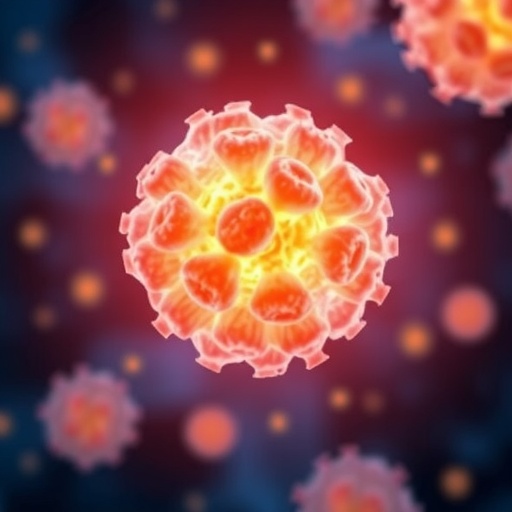Aug. 29, 2017 – For women undergoing risk-reducing mastectomy to prevent breast cancer, reconstruction can be challenging in those with larger breasts. A two-stage approach — with initial breast reduction and "pre-shaping" followed by mastectomy and reconstruction — appears to be a safer procedure with better cosmetic results, reports the September issue of Plastic and Reconstructive Surgery®, the official medical journal of the American Society of Plastic Surgeons (ASPS).
Targeted breast reduction/pre-shaping "primes" the breast for mastectomy and implant reconstruction performed a few months later, according the study by Gudjon L. Gunnarsson, MD, and colleagues of Telemark Hospital, Skien, Norway.
Breast Pre-Shaping Lowers Risks, Improves Final Results
More women are undergoing mastectomy and breast reconstruction to reduce their risk of familial breast cancer, based on detection of specific risk genes. Typically this is done in a single-stage procedure, with "nipple-sparing" mastectomy of both breasts followed by immediate breast reconstruction using implants.
However, it can be challenging to achieve good results with immediate reconstruction in women with large breasts (macromastia) with sagging or drooping (ptosis). These patients "more often end up having a difficult corrective procedure and unacceptably high rate of failed reconstruction," Dr. Gunnarsson and coauthors write.
To improve their results, the researchers developed a targeted, two-stage approach to this group of patients. In the first stage, the women underwent a breast reduction/breast lift (mastopexy) procedure to create "a breast better suited for implant reconstruction." In addition to reducing and reshaping the breast, an important part of this procedure was to lift the nipple-areola complex (nipple and surrounding tissues) to a more central position.
After a few months for healing, the women proceeded to the standard risk-reducing mastectomy and implant-based reconstruction. The online version of the article on the Plastic and Reconstructive Surgery website includes a video illustrating key aspects of the technique for plastic surgeons.
Between 2013 and 2015, Dr. Gunnarsson and colleagues used this two-stage approach in 22 women, median age 46 years. Mastectomy and subsequent reconstruction were successfully completed in all 44 breasts. The reconstructions were performed three to nine months (median four months) after initial breast reduction/reshaping.
Two patients had complications requiring repeat surgery; another five patients had minor complications that resolved with nonsurgical treatment. Importantly, there were no problems with the blood supply and survival of the nipple-areola complex.
In all cases, the cosmetic outcomes were rated excellent. The authors believe their technique is an important contribution to improving the results of risk-reducing mastectomy and breast reconstruction for women with large breasts. They note that the initial breast reduction/preshaping step "preconditions" the blood supply to the later reconstructed breast.
Dr. Gunnarsson and colleagues add that the two-stage procedure has become their "standard of care" for women with large breasts undergoing risk-reducing mastectomy. The researchers write, "The superior cosmetic outcome and low complication rate have proved to be better than we had anticipated."
###
Click here to read "Prophylactic Nipple-Sparing Mastectomy and Direct-to-Implant Reconstruction of the Large and Ptotic Breast: Is Preshaping of the Challenging Breast a Key to Success?"
Article: "Prophylactic Nipple-Sparing Mastectomy and Direct-to-Implant Reconstruction of the Large and Ptotic Breast: Is Preshaping of the Challenging Breast a Key to Success?" (doi: 10.1097/PRS.0000000000003621)
Plastic and Reconstructive Surgery® is published by Wolters Kluwer.
About Plastic and Reconstructive Surgery
For more than 70 years, Plastic and Reconstructive Surgery® has been the one consistently excellent reference for every specialist who uses plastic surgery techniques or works in conjunction with a plastic surgeon. The official journal of the American Society of Plastic Surgeons, Plastic and Reconstructive Surgery® brings subscribers up-to-the-minute reports on the latest techniques and follow-up for all areas of plastic and reconstructive surgery, including breast reconstruction, experimental studies, maxillofacial reconstruction, hand and microsurgery, burn repair and cosmetic surgery, as well as news on medico-legal issues.
About ASPS
The American Society of Plastic Surgeons is the largest organization of board-certified plastic surgeons in the world. Representing more than 7,000 physician members, the society is recognized as a leading authority and information source on cosmetic and reconstructive plastic surgery. ASPS comprises more than 94 percent of all board-certified plastic surgeons in the United States. Founded in 1931, the society represents physicians certified by The American Board of Plastic Surgery or The Royal College of Physicians and Surgeons of Canada.
About Wolters Kluwer
Wolters Kluwer N.V. (AEX: WKL) is a global leader in information services and solutions for professionals in the health, tax and accounting, risk and compliance, finance and legal sectors. We help our customers make critical decisions every day by providing expert solutions that combine deep domain knowledge with specialized technology and services.
Wolters Kluwer reported 2016 annual revenues of €4.3 billion. The company, headquartered in Alphen aan den Rijn, the Netherlands, serves customers in over 180 countries, maintains operations in over 40 countries and employs 19,000 people worldwide.
Wolters Kluwer shares are listed on Euronext Amsterdam (WKL) and are included in the AEX and Eronext 100 indices. Wolters Kluwer has a sponsored Level 1 American Depositary Receipt program. The ADRs are traded on the over-the-counter market in the U.S. (WTKWY).
Wolters Kluwer Health is a leading global provider of information and point of care solutions for the healthcare industry. For more information about our products and the organization, visit http://www.wolterskluwer.com/, follow @WKHealth or @Wolters_Kluwer on Twitter, like us on Facebook , follow us on LinkedIn , or follow WoltersKluwerComms on YouTube .
For more information about Wolters Kluwer's solutions and organization, visit http://www.wolterskluwer.com , follow us on Twitter , Facebook , LinkedIn , and YouTube .
Media Contact
Connie Hughes
[email protected]
646-674-6348
@WKHealth
http://www.lww.com




